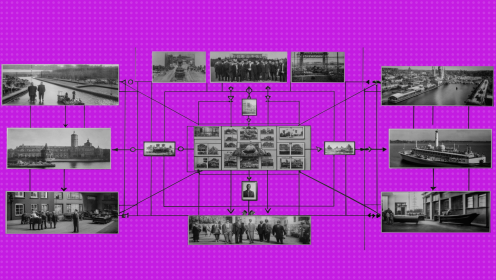Connection and communication
The first thing to know is that everyone needs a place for working communication. It was in the office when you could approach a colleague and discuss something you need, online format makes you look for other options online. And they are, frankly, not more convenient: email, messengers, callers, and even (God forgive me) the phone. It is not necessary to use all methods of remote communication, but it is useful, because sometimes it is better to distribute information flows:
- discuss important issues in emails,
- minor edits — in chats,
- call for urgent questions.
The main thing is that everyone clearly understands how and with whom you can contact.
When organizing communication with a remote team, follow two rules:
- Important information should be saved in the chat.
- All employees must have access to the selected communication methods.
The top options for interacting with remote team are video and conference calls, that is a great replacement for classic meetings. In addition, through visual contact, colleagues will be able to feel themselves as a part of the team.
Now there are many apps and services for video communication (after the mass transition of companies to remote access, there are even more of them). Choose a convenient option that every employee can easily install on their computer or smartphone (we use Zoom and Discord at WEEEK). Video calls can be included in the workflow, making it a mandatory part of the working day (for example, for a report on completed work). Or you can call once every couple of weeks just to talk and maintain a healthy atmosphere in the team.
Tasks and automation
Both in the office and on the remote site, you need a task manager for adequate task management (and if the company is large and there are a lot of cases - a system for project management). In the classic version, you can connect employees there, set and delegate tasks, track the time spent on work, conduct correspondence on tasks and report on their implementation. Different services add additional features to this set to stand out and become more convenient, but in general the essence is the same.
Task managers and project management systems are good for two things:
- They accumulate all the necessary information for work. You don't need to search for comments from the client by email, and then call the Manager back. When all the information is gathered in one place, there is much less inconsistency in the team's work.
- Some routine tasks (such as daily reports or notifying an employee of a new task) are automated, which saves a lot of time.
Important: If you have recently introduced the use of such services, make sure that all employees understand everything. Otherwise, even such a convenient tool will slow down the team's work.
Workplace
If the employee initially sits on the remote site, most likely, he has already provided himself with everything necessary. But if you are moving your team to remote from the office, it would be good to help them:
- give a laptop or webcam (if you have a desktop computer at home),
- give access to all necessary paid services and licensed software.
For their part, the employee will need to arrange a workplace, but that is another topic.
Reports and motivation
There is an opinion that remote employees are difficult to organize: they are distracted by household chores, it is impossible to control their presence at the computer. This is true, but, on the other hand, people in the office are not always busy: they will be distracted by General conversations, then they will go out for a breath of air or something worse. It all depends on the discipline of each employee.
If you don't trust your employees very well, here's what you can do to ensure control and check the quality of your work:
- Key performance indicators (KPI) motivate employees to take responsibility for their work and complete tasks in a timely manner. In addition, by introducing KPI, you can better organize your work processes. The main thing is not to demand the impossible — this, on the contrary, will reduce the motivation of employees, and they will not even try to keep up with all the goals set.
- Regular reports on completed tasks (or comments on completed but unfinished work) will help you and other managers navigate the workflow, and help the team to sum up small results, distribute responsibilities, and plan the next working day. Or a week. Or a month.
- Regular mailing of results or news will allow everyone to be aware of what is happening. By the way, this is a good alternative to summing up calls.
What not to do (otherwise working on the remote will not be productive)
Sometimes, when trying to improve the organization of work or tighten control, the manager only interferes with the work of the team. To avoid creating unnecessary anxiety:
- 1. Don't ask for a response after the end of the business day. Yes, the employee is still at the computer (or smartphone), but the evening is their personal time (unless you had separate agreements on this matter). If you require a constant online presence, at some point the employee will simply burn out and that's it. There was an employee and there is no employee.
- 2. Don't try to control all your working hours. A person will work harder if they know that they can go away for two minutes and pour themselves a cup of tea. Constant monitoring, monitoring the screen or using a webcam - all this can lead to the opposite result. Daily reports would be enough.
- 3. Remember the time zones. If you live in Moscow, and the employee is in Novosibirsk, do not try to call him at 9 PM (do not try to call without warning — this is not cultural). But when everyone works — at the same time or on an individual schedule — it's up to you.
As you can see, it is not so difficult to provide the entire team with conditions for remote access. But if the office has just started to switch to this format of work-do not rush to change the mode and enter all the updates at once. Employees are already in a new environment, and a change in the environment, messenger, and sudden performance indicators will be disappointing. Some of the tips, by the way, will be useful in the usual office environment — for example, reporting or project management systems.

















